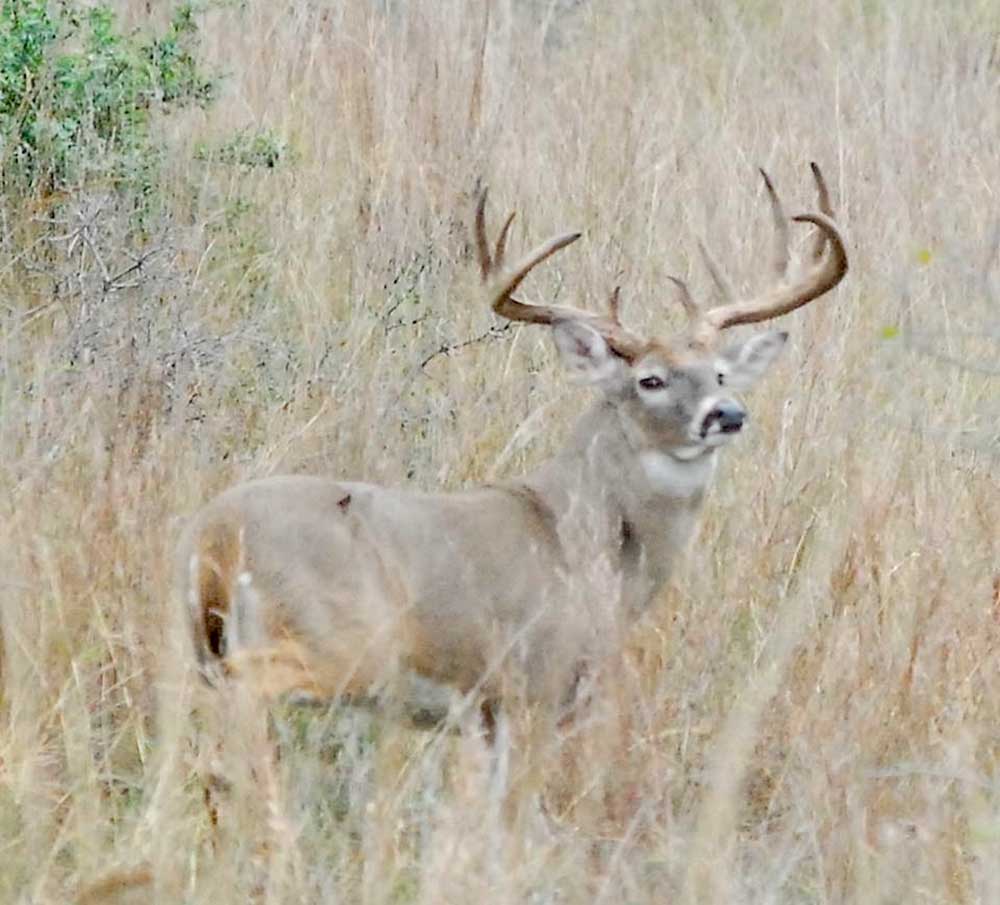On Target: Being prepared for a shot is the key to successful deer hunting
Published 7:22 pm Friday, October 27, 2023

- There are a lot of things that can impact a hunter’s accuracy beginning with the size of the deer, the steadiness of the gun and the rifle setup itself.
It is first light and standing 250 yards in front of your blind is a big buck. A really big buck.
But at that distance he might as well be a mile away. Even though your rifle is sighted in at 200 yards you have not had the practice or confidence to take a shot that long. You are more comfortable in the 100- to 150-yard range.
Your only hope is that the buck comes closer, or a lifetime trophy could slip away.
Hunting is all about the shot, and while guns, ammo and scopes are better than they have ever been and deer blinds offer a bit of a rest, making a good shot still comes down to the hunter.
“The biggest thing I see at these hunting camps is these guys spend thousands of dollars to kill a deer and they cannot shoot. They haven’t fired their rifle since the last hunting season. It doesn’t take a lot of time to fire a gun five or six times a year even if you dry fire it at home to just get a feel for the trigger,” explained Lance Coté, a long-time guide and management hunter on the famed Chaparrosa Ranch in South Texas and manager of the Mumme’s Gun Room in Hondo.
With more than 30 years’ experience doing management work in South Texas, Coté has taken an astounding number of deer, and is shocked at how inexperienced hunters are with their rifle when they arrive.
“It is amazes me how poorly they shoot. With some of them I tell the guide don’t let them shoot over 100 yards,” he said.
Anyone who deer hunts has at some point experienced buck fever. There is no cure, however, there are things hunters can do to reduce its impact on the shot, and to just make better shots in general.
“Don’t look at his antlers. Focus on his shoulder. Take deep breaths and squeeze the trigger,” Coté said.
Then there are the mechanical things to help make a hunter steady when taking the shot. Like most hunters have learned to do in recent years, Coté recommends using a weighted sandbag on the blind’s window to rest the rifle’s front stock on. And it should be the stock, not the barrel.
It is the back half of the set up that is often forgotten about resulting in missed shots.
“I usually take a Bog Pod and put the rear of the stock in the cradle,” he said.
Another key component is finding a rest for the trigger hand elbow like the back or a chair or side window to complete stabilizing the gun for the shot.
“It is like having one tire on a bicycle as opposed to two. It is going to be all over the place. You have to control the rear to make a gun steady,” Coté said.
Scopes can also play a role in accuracy in part from quality, mounting and magnification. Scopes have improved greatly over the years, but the adage buy all the scope you can afford still comes into play. The same holds true with quality mounts and making sure the scope is mounted tight and level.
Magnification is another issue. At one time fixed magnification was the only option. Today most hunters have variable magnification which can help see a target at distance, but reduces the field of view and light through the scope on early morning and late afternoon shots. Rifle movement also increases at high magnification adding to the importance of a stable rest and controlled breathing.
“Most hunters in Texas are shooting 100 to 200 yards so they don’t need anything over nine or 10 power,” said Coté, who commonly takes management deer at 500-plus yards.
When it comes to calibers there are a lot of options for shooting white-tailed deer, however, depending on who is shooting and how far they are shooting there are options that are better than others.
“I would rather see them with a .243 that they can shoot than a .300 Win mag that they can’t shoot because they are scared of it,” Coté said.
However, he added the .243 can be on the light end in the case of a rutting buck or in the hands of an inexperienced shooter. In recent years Coté said the 6.5 caliber has the most popular caliber at his gun shop starting with the Creedmore, but in recent years switching to the PRC. Still, he said there are tried-and-true calibers ranging from the 25.06 to .270 and 30.06 that are all capable.
Coté warns hunters that most rifles come with about a 6-pound factory trigger pull, and that by switching triggers or adjusting theirs down to about 2 pounds will help accuracy.
He also recommends matching the rifle with a bullet that shoots at least 3,000 feet per second for knockdown power and accuracy.
“You want something that is flat and fast so there is less time for the wind to screw with (the bullet) while it is in the air,” he said.
The final ingredient in successful shooting is shot placement. Coté’s recommendation is the center of the shoulder for a broadside shot, just inside the front shoulder for a deer quartering in and just behind the shoulder for a deer quartering away.
TWITTER: @PhilHicksETFS






